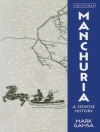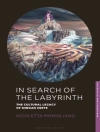Mobilizing nature traces the environmental history of war and militarisation in France, from the creation of Châlons Camp in 1857 to military environmentalist policies in the twentieth century. It offers a fresh perspective on the well-known histories of the Franco-Prussian War, Western Front (1914-18), Second World War, Cold War and the anti-base campaign at Larzac, whilst uncovering the largely ‘hidden’ history of the numerous military bases and other installations that pepper the French countryside. Mobilising nature argues that the history of war and militarisation can only be fully understood if human and environmental histories are considered in tandem. Preparing for and conducting wars were only made possible through the active manipulation and mobilisation of topographies, climatic conditions, vegetation and animals. But the military has not monopolised the mobilisation of nature. Protesters against militarisation have consistently drawn on images of peaceful and productive civilian environments as the preferable alternative to destructive tanks and bombs.
Written in an accessible style, Mobilizing nature will appeal to readers interested in modern France, environmental history, military geographies and histories, anti-military protests, and environmentalism.
Tabela de Conteúdo
Introduction
1 The Emperor’s new camp (1857-70)
2 Militarized environments during the ‘terrible year’ (1870-71)
3 Remaking militarized environments in the wake of defeat (1871-1914)
4 The ‘mangled earth’ of the trenches (1914-18)
5 Demilitarization and militarization (1918-40)
6 Occupied territories (1940-67)
7 ‘A (very) large military camp’: The militarization of postwar France
8 Opposing militarized environments
9 ‘Greening’ militarized environments
Epilogue
Select bibliography
Index
Sobre o autor
Chris Pearson is Lecturer in Twentieth Century History at the University of Liverpool












